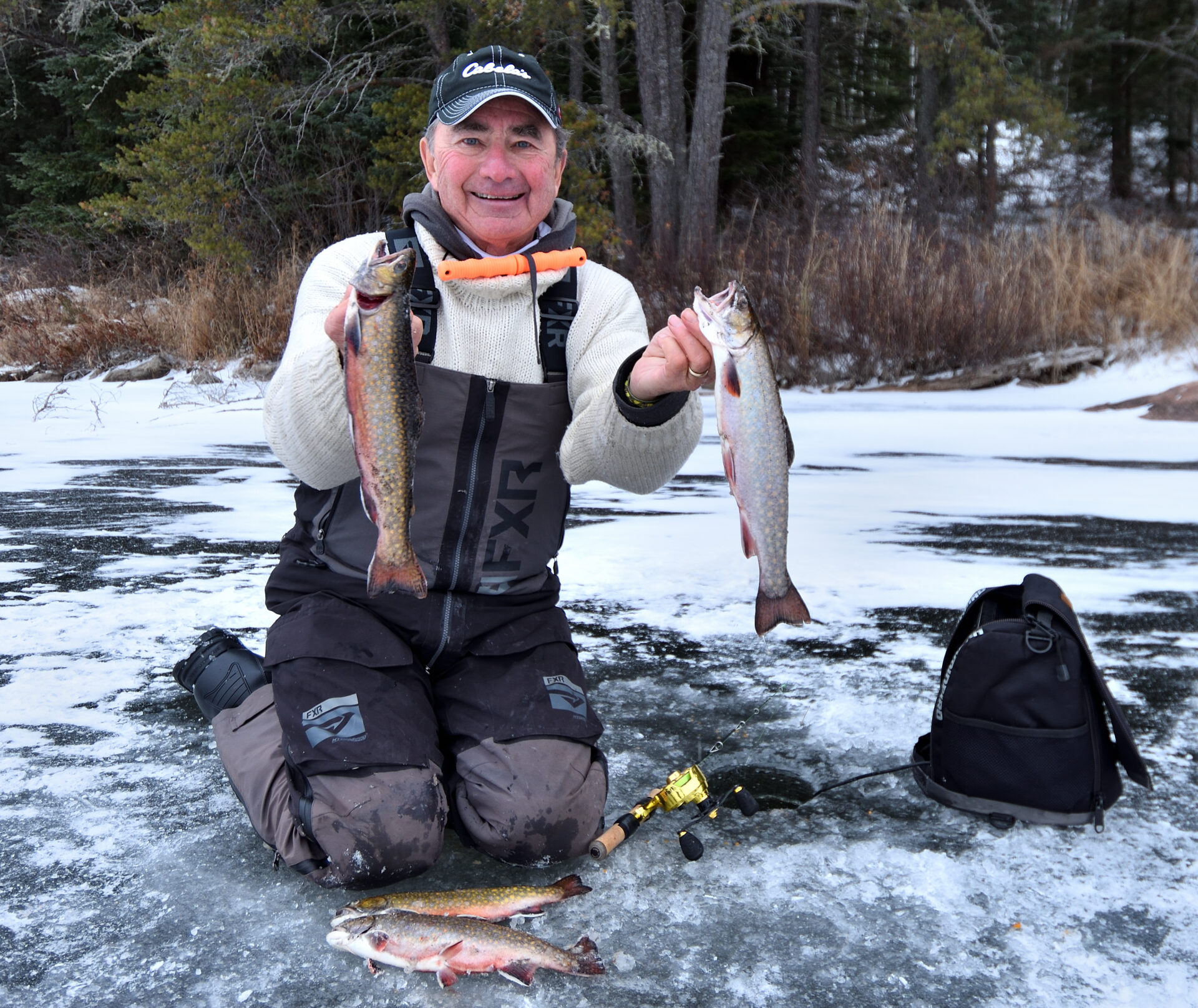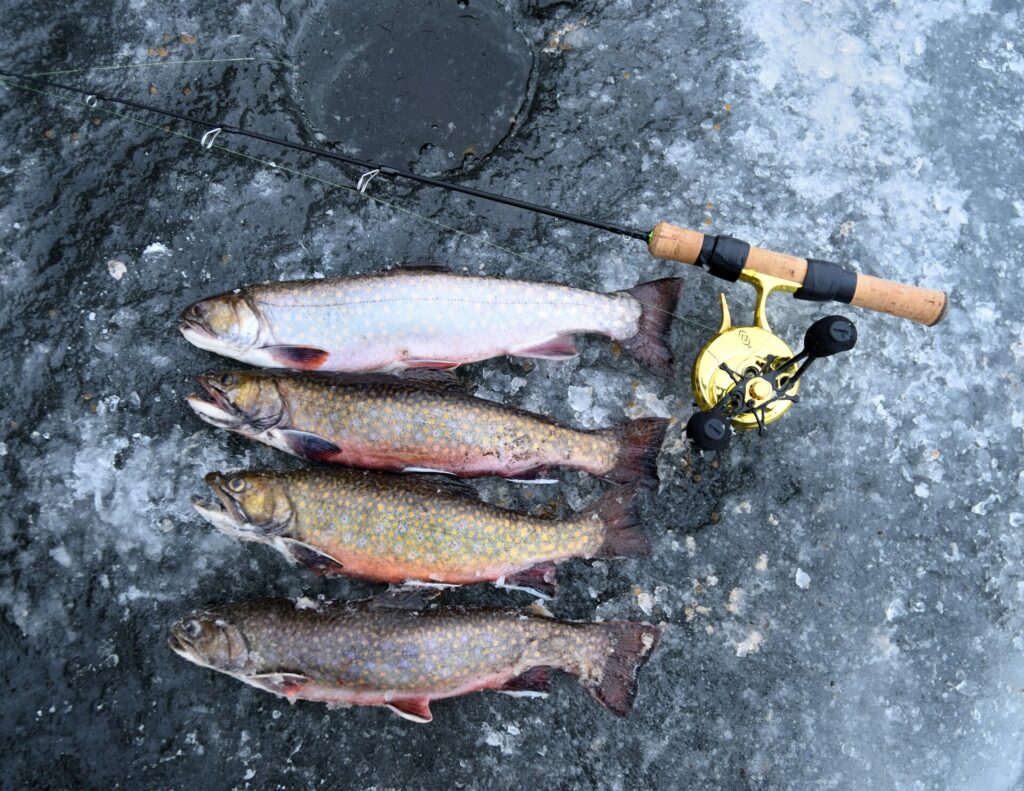THE BATTLE OF THE SEXES
"Male" trout with eggs? Stocked fish still carrying eggs in winter? Science explains what's going on
Advertisement
I always find it fascinating to follow social-media discussions about identifying different fish species—blue pickerel and tiger muskies come to mind—and even the differences between the sexes of a particular fish species, based solely on colour or patterning.
I found myself doing it the other day, when I was ice fishing for brook trout and kept these four nice fish for dinner: three males and a female—or so I thought. But when I prepared them for the grill, I was surprised to discover eggs in one of the brightly coloured “males” which was, in fact, a female.
Advertisement
I was curious about how often this happens, and also why the two ripe females were still bulging with loose eggs, when brookies typically spawn much earlier in the fall. In addition, most brook trout stocked into lakes don’t spawn successfully, so I wondered why the fish weren’t reabsorbing the eggs, given how little is wasted in nature. To get the answers—which are truly fascinating, as always—I contacted my good friend and biologist, Jeff Matity, who works for the Saskatchewan Fish Hatchery.
“Over the years of growing hundreds of brood-stock brookies, I’ve noticed individuals that are complete outliers,” Matity said. “It’s usually a situation where you get a male with a rounded snout, weak kype and soft colouring. A female with a pronounced kype and gaudy paint job is much more rare in my experience.
Advertisement
“As for why the females are still carrying eggs into the winter, I’m not surprised, as we still have about eight gravid brook trout to spawn at the hatchery. In a natural setting, males achieve spawning condition weeks before females, and remain this way well past the final female ripe stage. As far as dropping or aborting their eggs, once the eggs of trout are fully ripe and freed from the skeins, they’re loose within the body cavity and divorced from the circulatory system. I believe that is different from many other fish, like pike, for example.
“Environmental cues [that make spawning problematic] like drought, flood and late ice-out, signal an individual pike to instruct her hormones to abort and begin absorbing her eggs, while they are still connected to the ovary’s circulatory system. Her egg mass would remain intact and degrade into a denser and denser mass well into the summer months. Because her eggs are still connected to, and compromising, the ovary, this makes a mature female pike unable to fully clear the mass in order to start a new clutch of eggs and, therefore, spawn the following season.
Advertisement
“When a female trout is ripe, however, her eggs separate from the skein and the individual berries that are not cleared are reduced to minuscule diamond-shaped, empty shells that float within the body cavity and are passed out of her body with the next year’s good eggs.”
Interestingly, Matity went on to tell me that he suspects geology and waterbody type—lakes, rivers, reservoirs—play a huge role in the liberal nature of trout dropping their eggs in more ideal environments than, say, northern pike that live in highly variable environments.
“I am convinced this is one of the reasons why stocked brook trout only live to about eight years of age, while northern pike and walleye live for decades,” he said. “Longevity is a major mechanism that allows fish species in compromising ecosystems to persist, when droughts and flooding can last for a decade. So they kick out a good year class maybe four or five times in their much longer lifetimes.”
Such fascinating stuff.


